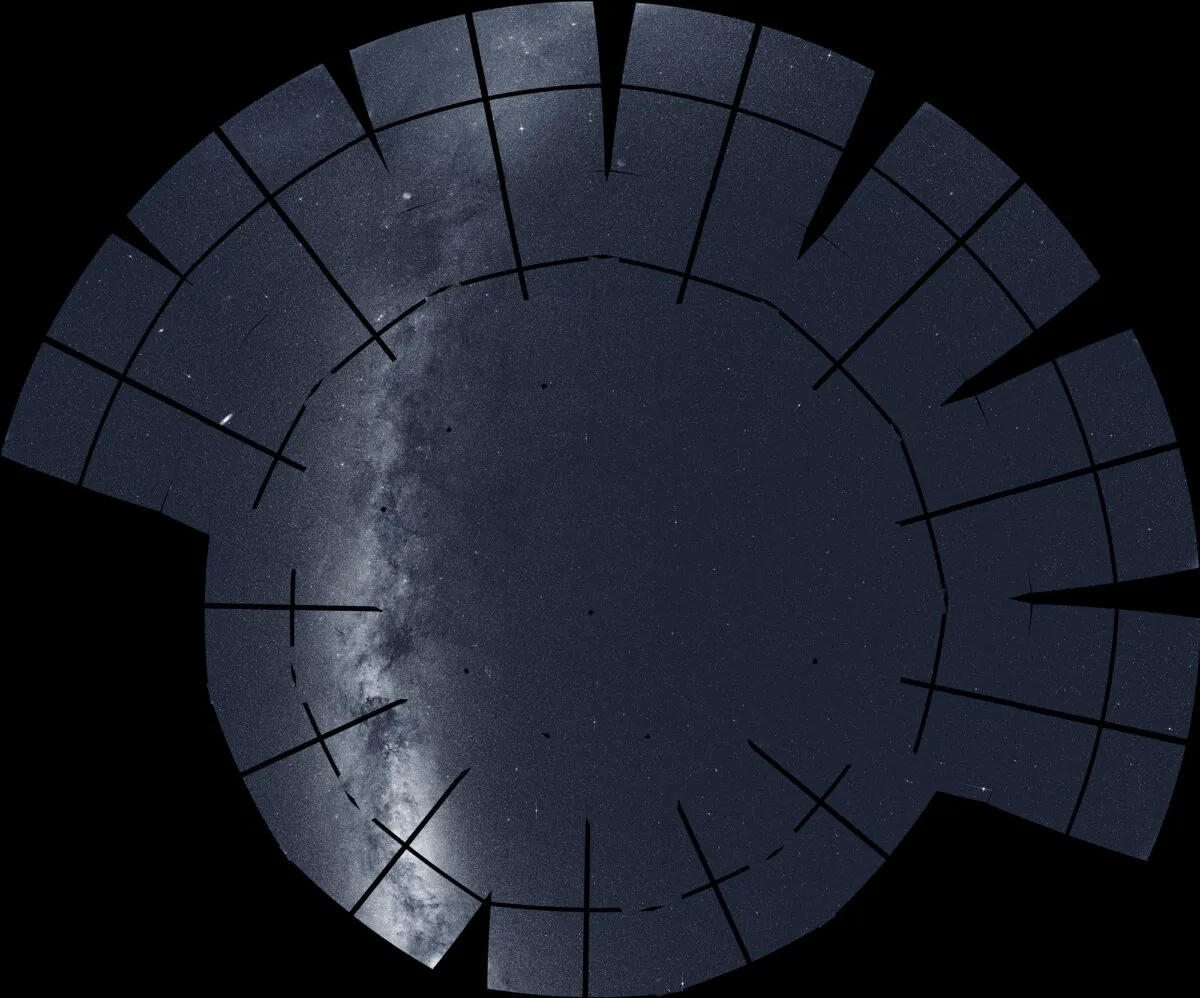
This view of the northern hemisphere sky is a mosaic produced using a total of 208 individual images captured by NASA’s exoplanet-hunting TESS telescope.
TESS, or the Transiting Exoplanet Survey Satellite, has imaged about 75% of the sky during its 2-year-long survey searching for stars orbiting distant planets, known as exoplanets.
In this new image of the northern sky can be seen the dust clouds of the Milky Way (on the left) and our neighbouring galaxy the Andromeda Galaxy (as an oval, centre left).
At the time of writing, TESS has discovered 74 exoplanets, and there are still around 1,200 additional exoplanet candidates detected by the spacecraft that have yet to be confirmed. Over 600 of these are in the northern sky.
TESS’s survey of the night sky is strictly methodical, as you might expect. It splits each celestial hemisphere into 13 regions, each of which is imaged for around a month using four cameras carrying a total of 16 CCD cameras.
The gaps in the image panels are a result of astronomers’ desire to have TESS’s cameras diverted further north in order to lessen the impact of scattered light from Earth and the Moon.
TESS is now due to spend another year imaging the southern sky, revisiting exoplanets it discovered in its first year and, mission scientists hope uncovering new worlds yet to be discovered.
Image stats
Observatory Transiting Exoplanet Survey Satellite
Release date 5 October 2020
Image creditNASA/MIT/TESS and Ethan Kruse (USRA)
